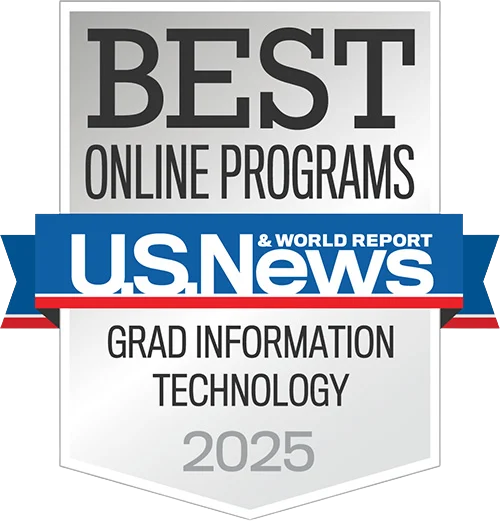Certificate in Applied Machine Learning
Start anytime. Learn at your own pace.
Put ML and neural networks to work for your data and career.

Curriculum designed and delivered by Hopkins APL’s Dr. Ehran Guven
LIVE monthly seminars and office hours
Engaging learning including video walkthroughs and hands-on activities
Satisfaction guaranteed. Explore the certificate with no risk.
Save $300 with the certificate vs. buying courses separately
Machine learning is driving breakthroughs—not by replacing expertise, but by enabling insights and capabilities that were once out of reach. To put it to work—in your data, your research, your career—it’s not enough to tweak GitHub code or borrow models that answer someone else’s questions. You need to understand and build them from the ground up.
In his three-course Certificate in Applied Machine Learning Dr. Erhan Guven guides you through the full machine learning workflow: from how to clean and prepare data all the way to building deep learning neural networks.
From his experience on mission-critical projects at the Johns Hopkins Applied Physics Laboratory and teaching hundreds of online master’s students, Dr. Guven designed a program that gets you up and running quickly with applied, real-world applications.
Through Jupyter notebooks with working code examples, video walkthroughs, quizzes, readings, and hands-on projects, you’ll get the conceptual grounding to reason through model design and performance—without getting bogged down in theory.
Using tools like scikit-learn, pandas and PyTorch, you’ll build models that don’t just “run,” but make meaningful predictions, reveal patterns, and generalize to new data.
With Dr. Guven’s guidance, you’ll design powerful systems that recognize images and understand audio. You’ll get the skills to solve real world problems in business intelligence, research, healthcare, and software development using the same cutting-edge deep learning techniques elite researchers and industry giants are using to push the boundaries of science and technology.
The Certificate combines Dr. Guven’s 3 sequential ML courses:
Into one bundle, saving you $300 off the cost of buying each course separately.
Earning the Certificate
After completing the course content, you can earn you Certificate by submitting a capstone project—proving to colleagues and employers that you’re ready to take the lead in complex machine learning projects that drive insights and ROI.

The capstone requires applying all skills from the 3-course certificate into a single deliverable that demonstrates knowledge of state-of-the-art ML and includes sufficient performance metrics. The project will be reviewed by Dr. Guven, who will provide feedback, which can be discussed further during live office hours.
The image is for illustrative purposes only. Actual certificate design subject to change,
No Risk: Satisfaction Guaranteed
Feel confident in your learning journey! If the certificate content is too advanced, not advanced enough, or simply doesn’t meet your expectations, we’ve got you covered with our money-back guarantee. Just contact our team within 7 days from purchase to receive a full refund—no questions asked.
Meet Your Instructor
Dr. Erhan Guven
Johns Hopkins University, Johns Hopkins Applied Physics Laboratory

Dr. Guven is an AI scientist at Johns Hopkins University Applied Physics Laboratory and assistant program manager in Johns Hopkins Engineering’s #1 ranked online master’s programs in AI and data science. His research spans a broad spectrum of machine learning applications, including large language models, financial systems cybersecurity, NLP, and bioinformatics. He earned his PhD in computer science from George Washington University. In his spare time, he enjoys gardening, beekeeping, building computers, and playing Defense of the Ancients.
Dr. Guven is Here to Help!
Questions about course content? Looking compare model results or get feedback? Stop by monthly Zoom office hours to talk with Erhan and fellow students.
Prerequisites
You should be familiar with Python programming, including experience writing and running scripts. While extensive coding expertise isn’t required, comfort with foundational programming concepts and tools such as NumPy or pandas will be beneficial. Prior experience with machine learning is not necessary—however, a willingness to engage with mathematical concepts like algebra and basic statistics will help you grasp key techniques.
Course Summaries
Jump into building working classification systems while ensuring you have the essential knowledge of data preparation and feature engineering—the keys to ML success.
Dr. Guven’s Jupyter notebooks will keep you on the right track, helping you understand the machine learning workflow while challenging you to implement key components yourself. You’ll develop practical coding skills (and confidence) as you progress from data preparation through model training to evaluation and refinement.
With scikit-learn, pandas, and real-world datasets you’ll implement your first Support Vector Machines, Naive Bayes classifiers and text categorizing systems. Then you’ll make them more accurate and more predictive.
By the conclusion of this course, you’ll be able to implement the complete machine learning workflow and have an excellent foundation to build upon.
You’ll build…
- The Titanic Survival Predictor (a classic ML introduction)
Join over a million data scientists who’ve started their machine learning journey by transforming passenger information into survival predictions. Post your results to the Kaggle leaderboard and get immediate feedback. - Handwritten Digit Recognizer
A classification system using Support Vector Machines to automatically identify handwritten digits from the MNIST dataset. - Cancer Recurrence Predictor
Create a text classifier using TF-IDF vectorization to identify 20 different programming languages from Stack Overflow posts, training linear SVM models on a dataset of 40,000 code snippets. - Stack Overflow Language Classifier
Create a text classifier using TF-IDF vectorization to identify 20 different programming languages from Stack Overflow posts, training linear SVM models on a dataset of 40,000 code snippets. - Graduate Admissions Forecaster
Develop regression models to predict graduate school admission probability, implementing data transformation and normalization to improve prediction accuracy.
Even models that perform well in testing can fail in practice—overfitting, breaking, or offering little visibility. Course 2 focuses on making ML work in real-world settings: ensemble methods, advanced regression, unsupervised pattern discovery, and reinforcement strategies.
Build models that are not only accurate, but also robust, interpretable, and adaptable—able to handle messy, high-dimensional data and shifting inputs. Experiment with feature selection, dimensionality reduction, and model evaluation to improve performance.
Design systems that go beyond fitting to explain, adapt, and deliver meaningful results when stakes are high.
You’ll build:
- Titanic Random Forest Classifier
Use decision trees and majority voting to build a Random Forest that outperforms individual models. - Heart Disease Ensemble Benchmark
Compare ensembles made from decision trees, neural nets, SVMs, and Naive Bayes on to see how well they hold up - Cancer Recurrence Predictor
Train a logistic regression model on medical data—focusing on interpretability, feature scaling, and evaluation. - Advanced Regression Explorer
Fit and compare linear, polynomial, and logistic regression models, and learn when simple metrics fail to capture real-world performance. - Customer Pattern Mining with Apriori
Discover hidden associations in transactional data using Apriori analysis—a key technique behind modern recommendation systems.
Pivot from classic machine learning to deep learning: the approach behind today’s most powerful AI systems.
You’ll start by building neural networks from scratch to understand how they learn, step by step, through backpropagation. Then, using PyTorch, you’ll construct deeper architectures that learn directly from raw data: convolutional networks that can classify images and spectral models that can detect patterns in audio. You’ll also confront the real challenges that come with depth: overfitting, vanishing gradients, and high computational cost—and learn how to address them with dropout, batch normalization, and GPU-based training.
Instead of relying on manual preprocessing or feature engineering, you’ll train systems that extract structure on their own—even from noisy, complex, or high-dimensional data. And by the end of the course, you’ll be able to recognize when deep learning is the right tool—and how to use it effectively.
You’ll build:
- Neural Network from Scratch
Construct a multilayer perceptron using only NumPy and PyTorch tensors—manually coding forward propagation, backpropagation, and gradient descent. - Image Classification with CNN
Use PyTorch to build a CNN that classifies MNIST digits with high accuracy. Learn how convolutional layers extract spatial features and why CNNs outperform fully connected networks on image tasks. - Audio Classification with Spectrograms
Transform raw audio into spectrogram images and train a CNN to classify environmental sounds. You’ll experiment with dropout, batch norm, and architecture tuning to build models that handle messy, real-world data. - Scene Recognizer
Train both a fully connected network and a CNN to classify natural scene images—and see why spatial features matter. This side-by-side comparison highlights how architecture impacts accuracy, especially on complex image data. - Stack Overflow Code Classifier V2
Use TF-IDF features and a PyTorch neural network to predict the programming language behind Stack Overflow posts. You’ll build a multi-class text classifier and compare it to an SVM to learn when deep learning pays off—and when it might not.
Tab 4 content.
Powered by Engineering for Professionals
The #1 Ranked Online Grad Program for Computer Information Technology by U.S. News & World Report

Johns Hopkins Engineering’s Lifelong Learning delivers executive education courses from the same faculty and support team behind Johns Hopkins Engineering for Professionals, the nation’s #1 online, part-time graduate program in computer information technology. This ranking includes our master’s programs in computer science, artificial intelligence, cybersecurity, information systems engineering, and data science.
Course Delivery and Support
The courses are delivered entirely online through the industry-leading Canvas Learning Management System. This system is supported by the same instructional design team behind Johns Hopkins’ renowned Engineering for Professionals program, which serves thousands of online graduate students each year. Upon registration, you will receive an email with instructions to create your Hopkins Canvas account and access the videos, readings, files and quizzes.
Certificate in Applied Machine Learning
Artificial Intelligence
Online Self-Paced
60 hours
7 CEUs
$1500
$1200
No Risk: Explore the Certificate for 7 Days